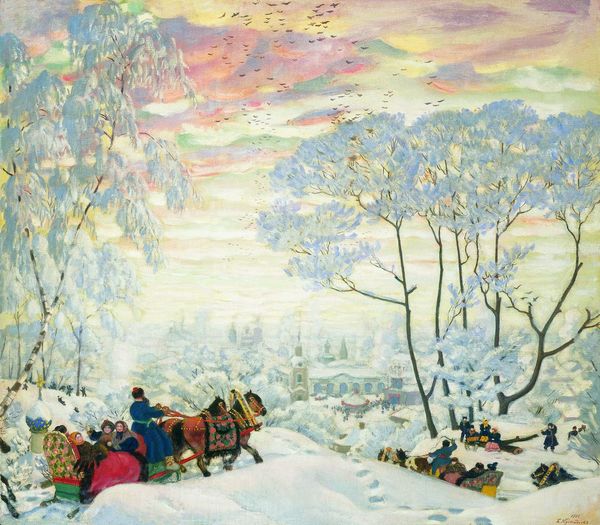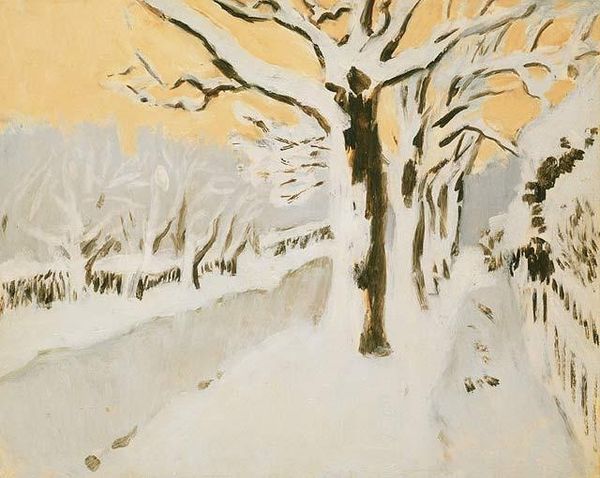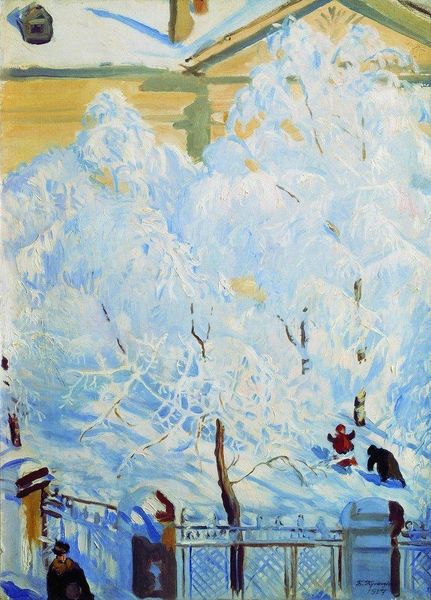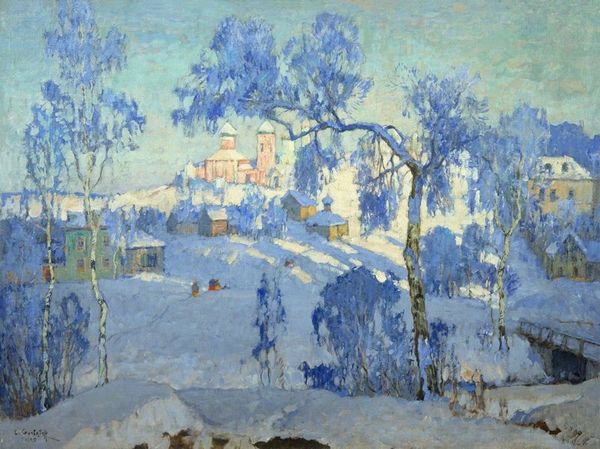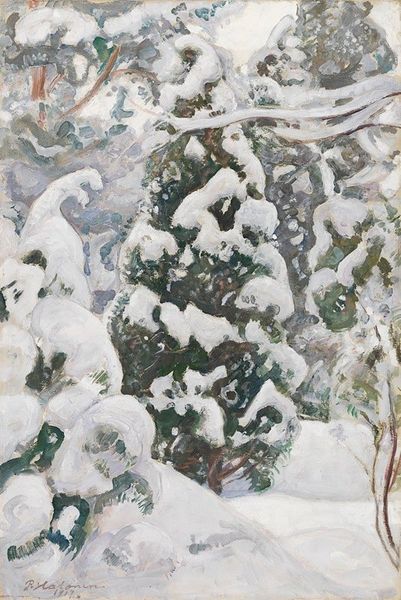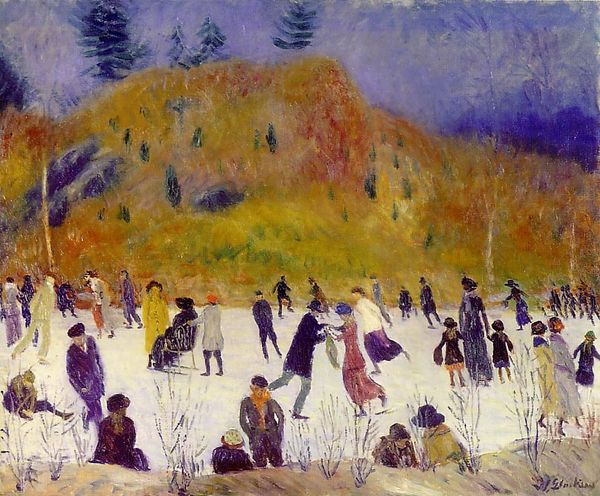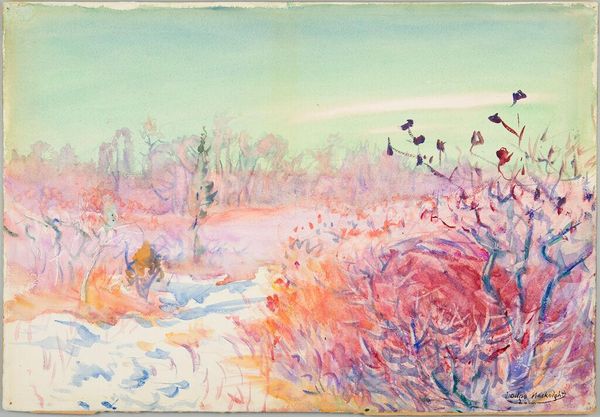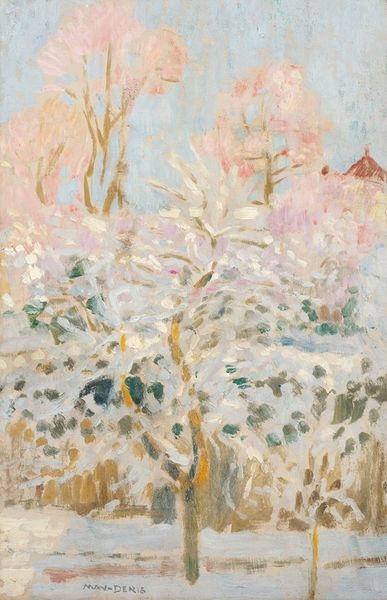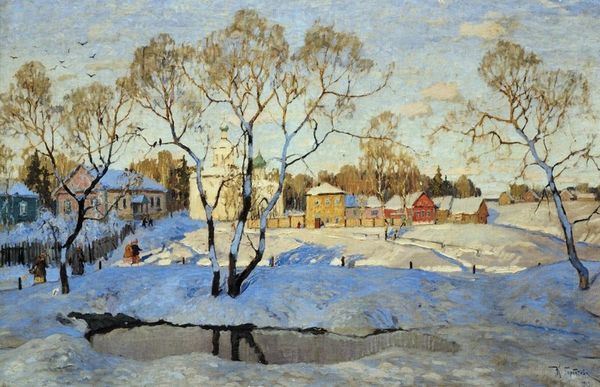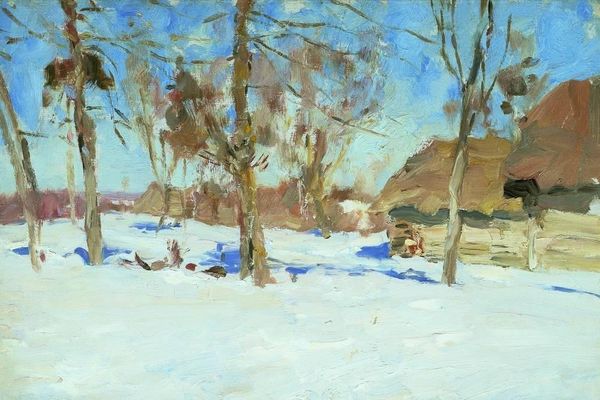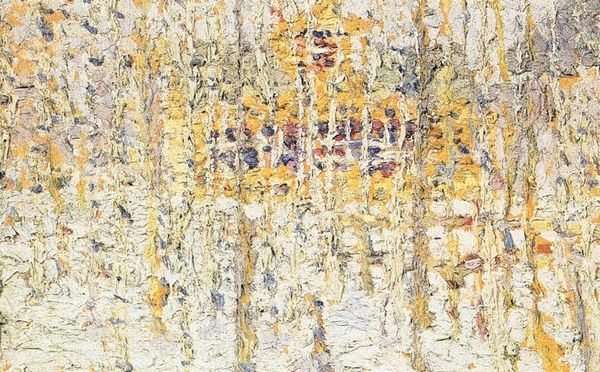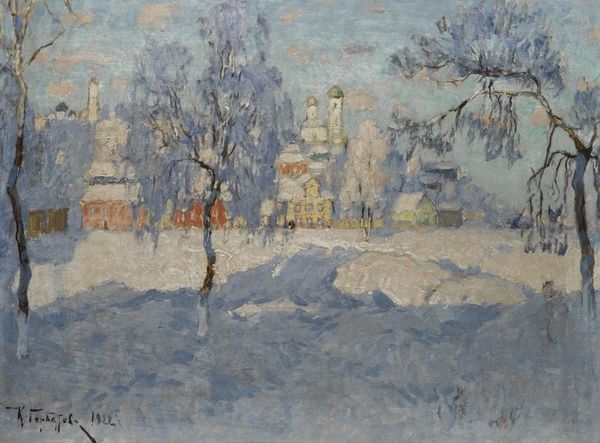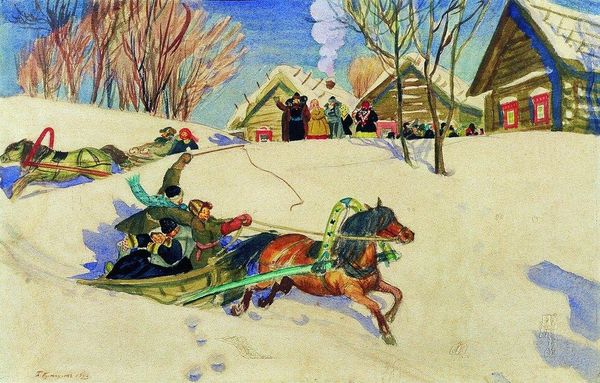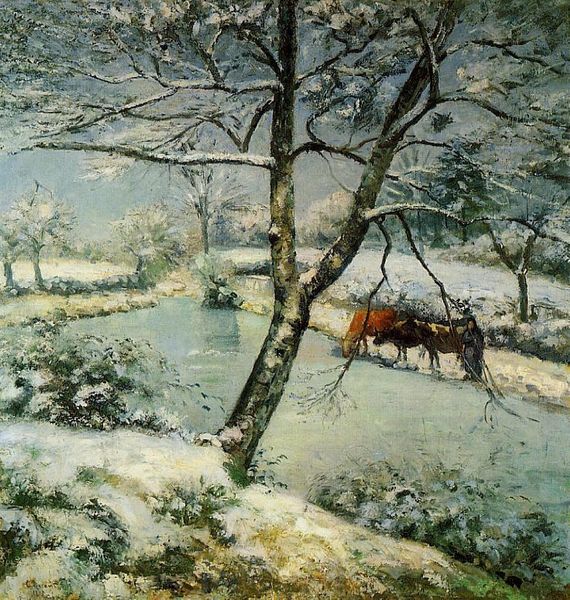
painting, oil-paint
#
portrait
#
tree
#
narrative-art
#
painting
#
oil-paint
#
landscape
#
winter
#
house
#
impressionist landscape
#
group-portraits
#
expressionism
#
russian-avant-garde
#
cityscape
#
street
#
expressionist
#
building
Copyright: Public domain
Editor: So this is "Shrovetide," painted by Boris Kustodiev in 1916, using oil paints. It's… busy! There's so much movement, but it still feels peaceful because of all the snow. What do you make of it? Curator: Kustodiev's “Shrovetide” is intriguing when we consider the socio-political context alongside its materiality. Painted on the eve of the Russian Revolution, it romanticizes pre-revolutionary Russia, a land on the cusp of massive material change. The vibrant strokes of oil paint, layered to create a sense of depth, almost act as a defiant embrace of traditional modes of production. Editor: Defiant? How so? Curator: Consider the very act of painting such a nostalgic scene amidst revolution. It can be seen as a commentary on the loss of traditional crafts and modes of life replaced by industrialization. Even the impasto technique speaks volumes – it highlights the physical labor involved in creating art, elevating it beyond mere representation to an act of making and producing. Editor: I see what you mean. The artist's process becomes part of the meaning. It's not just about the pretty picture of a snowy day, but about the value we place on different kinds of work. Curator: Exactly. Think about who this painting was for. Wealthy patrons, perhaps, who benefited from the old order. Was Kustodiev offering them a comforting vision or a subtle critique of their dependence on outdated systems? Editor: That’s a fascinating way to look at it. It shifts my focus from simply admiring the beauty of the scene to questioning the historical circumstances of its creation and consumption. Thanks! Curator: Absolutely. Examining art through a materialist lens allows us to appreciate not just what's depicted but how it was made and the message it conveys about society’s values regarding labor and production.
Comments
No comments
Be the first to comment and join the conversation on the ultimate creative platform.
